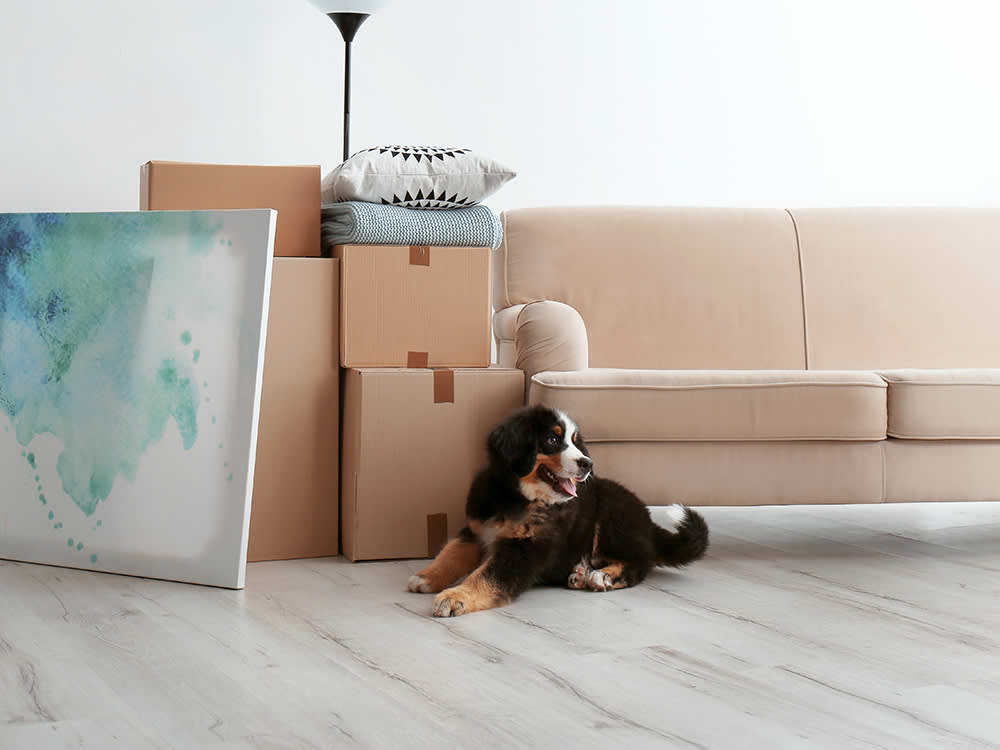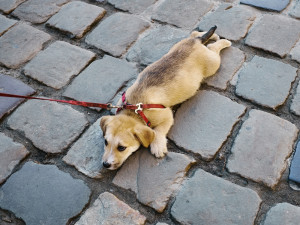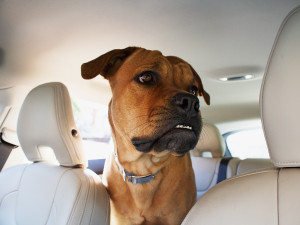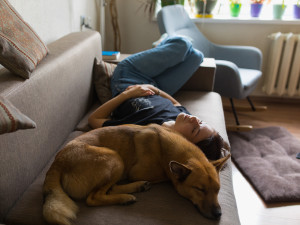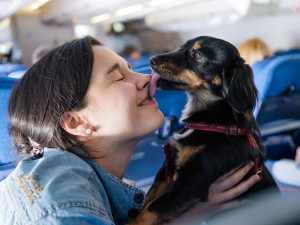Making a Move? Here’s How to Help Your Dog Adjust to Your New Home
Your dog hates moving, too. This dog trainer’s tips will make it easier on everyone
With all the hassles and associated packing, moving is usually a horrible experience with a bit of the dreadful and stressful thrown in just to make sure that you really hate it. It’s not just you who hates moving – it can be miserable for your dog, too. The good news is, there are ways that you can ease your dog’s transition to a new home. Here’s how to set your dog (and yourself) up for success.
Before you pack
Have the boxes and other essential moving items such as packing tape, newspaper and bubble wrap in your house well ahead of the move so your dog can get used to them.
Associate these items with play and treats, so that your dog develops positive rather than negative feelings towards them.
Boxes can easily be damaged by dogs, and dogs can easily be damaged by bubble wrap, so don’t let them be together unattended.
While you pack
Carve out some time for your dog despite all of the mayhem of the move. Take your dog out for walks, classes or playtime (even a little goes a long way). If you’re swamped by all the packing and other torturous parts of moving with a dog and your schedule is disrupted, that’s understandable.
Get (totally free) deals for food, treats, accessories, tech and way more pet parenting must-haves.
Still, it’s important not to make the mistake of thinking that since you don’t have time for a 45-minute walk, not going on a walk is an option. Even 10 minutes of getting out of the house to walk or five minutes of fetch in the yard is a way to be kind to your dog, and to yourself. Everybody needs breaks for a little fun! Hopefully, this rough patch will be brief, and after the move you can return to a routine that involves the usual amount of time devoted to your dog.
Keep your dog away from the actual packing as much as possible. Watching everything in the house be shuffled and packed is inherently unsettling for most dogs. The less they see this going on, the better. You could have another family member take your dog for a walk while you pack. Or, if it’s possible, bring our dog to a friend’s house so they’re away from the packing nightmare entirely.
Now is a great time to cash in that favour from a friend or neighbour. Many people will be so relieved that they can be of service without having to lift a heavy sofa that you’re likely to get the assistance you need with a smile.
How to help your dog adjust to your new home
Once you’ve moved in, there are a few things you can do to ease the transition for your dog. Here are some simple tips to try.
Do stick to old routines
All of the changes associated with moving are stressful, so do what you can to maintain the same general routine as before. So, if your dog is used to getting up, going into the garden, eating breakfast, and then going on a walk, try to follow that same pattern in the new place. If you have to change things up because of a new job or other commitments, try to keep as much of the old routine in place as possible for at least a couple of weeks. Once your dog has settled in, additional changes will be easier to handle.
Don’t buy new dog gear yet
It’s natural to want to buy new stuff when you move to a new house. But in the beginning, keep your dog’s old stuff for at least a few weeks until they’re used to the place. Yes, I know it’s not ideal to bring a nasty, fur-covered old dog bed and water bowls with dings in them to your new home, but those things are comforting to your dog, so don’t take them away. If your urge to buy new things for your dog is overwhelming, indulge it with new toys or things to chew on.
Do give your dog lots of loving
Playing, walking, and just being with your dog sounds simple enough (after all, that’s what you normally do, right?). The problem is that when you move, you can become so overwhelmed that you may unintentionally ignore your dog or skip their walk. So commit to spending quality time with your dog every day and that will help them out a lot.
Don’t leave your dog home alone in the beginning
Even dogs who have been perfectly comfortable for years being left alone may struggle in a new home. Most dogs are extremely place sensitive and need to learn to be OK when left alone in a new location. Try to wait as long as you can before leaving your dog alone at the new house, even if that means awkwardly taking them everywhere for a few days or so.
If you’re moving with other family members, one option is to take turns staying home with your dog for those first few days so that at least one of you is always with them. When you do have to leave your dog, start with short departures if you can. Always leave them with something they love such as a Kong stuffed with treats or something new (and safe even without supervision) to chew on. You may also want to leave their usual dog bed, crate or blanket to comfort them.
Do spend time on the floor with your dog
One of the things that helps dogs feel at home when they’re somewhere new is familiar smells. You can add those familiar smells to your house faster by spending time on the floor with your dog. Being on the floor together also adds to the time you spend giving them the loving that they needs during this stressful time.
Above all, be patient
This may be the most obvious advice of all, but being patient and letting your dog adjust at their own speed is wise. Some dogs will be perfectly comfortable within a few days, many take a few weeks to settle in, and some dogs can take months or more to feel at home in a new place. No matter how long it takes your dog to adjust, your patience is more likely to speed things up than impatience ever could.
